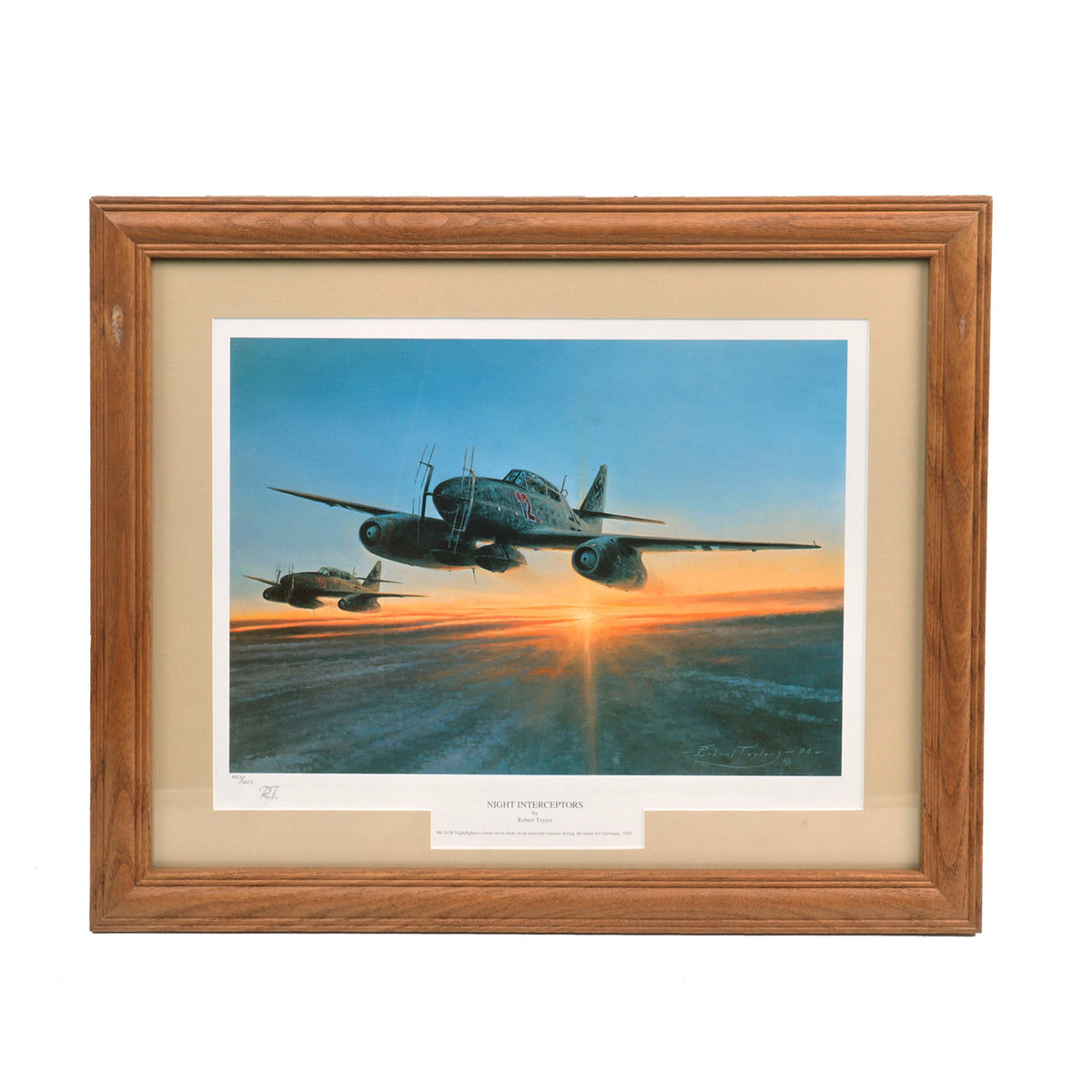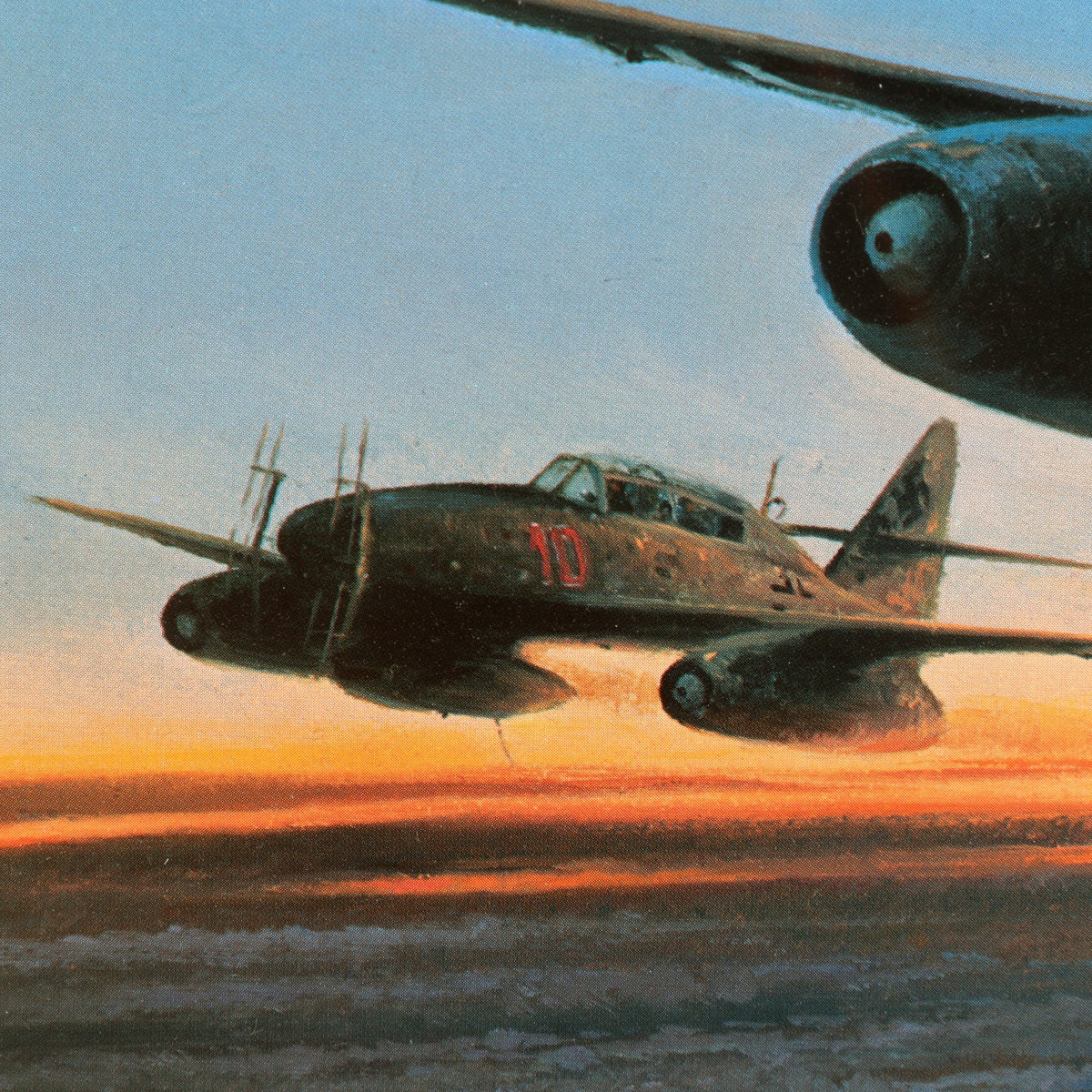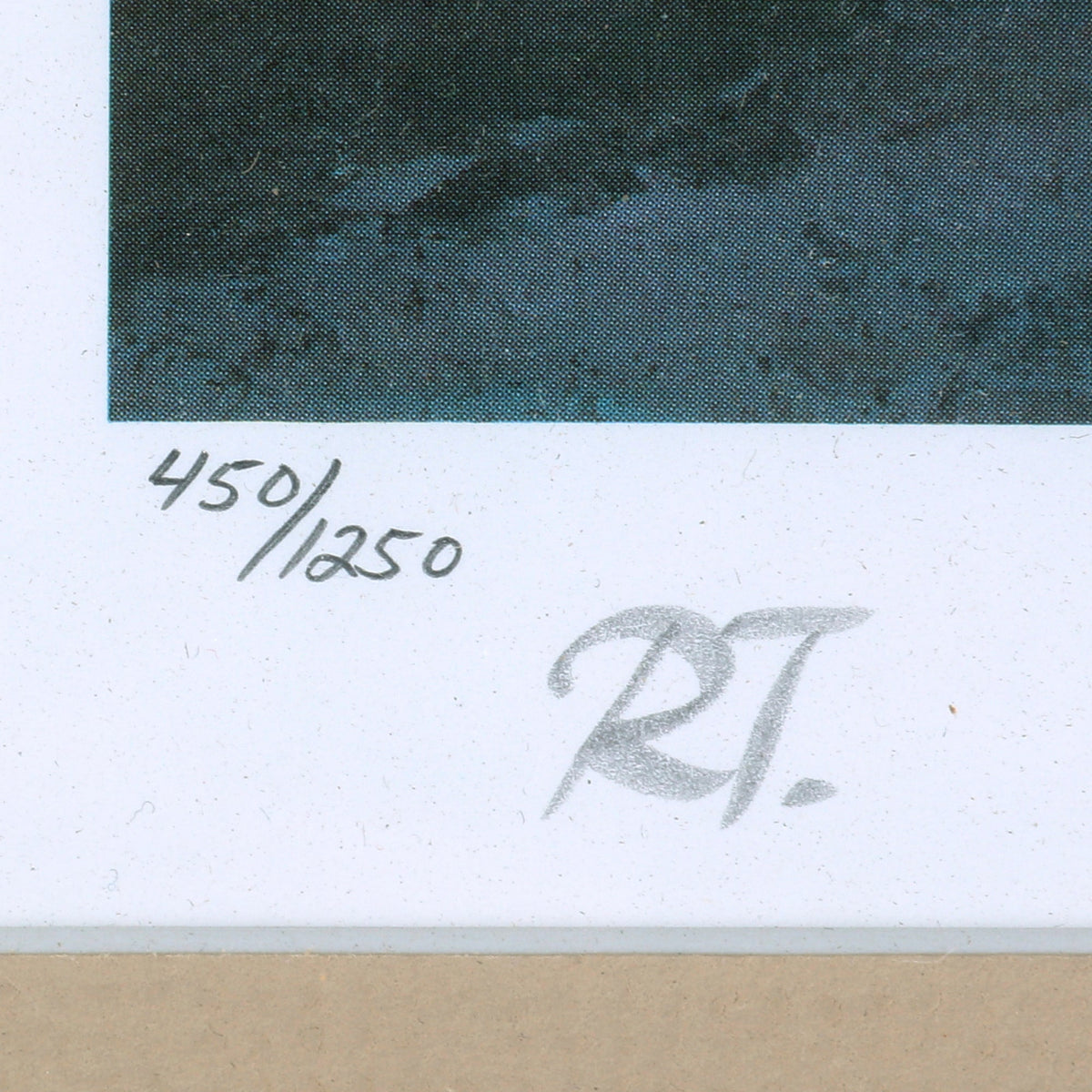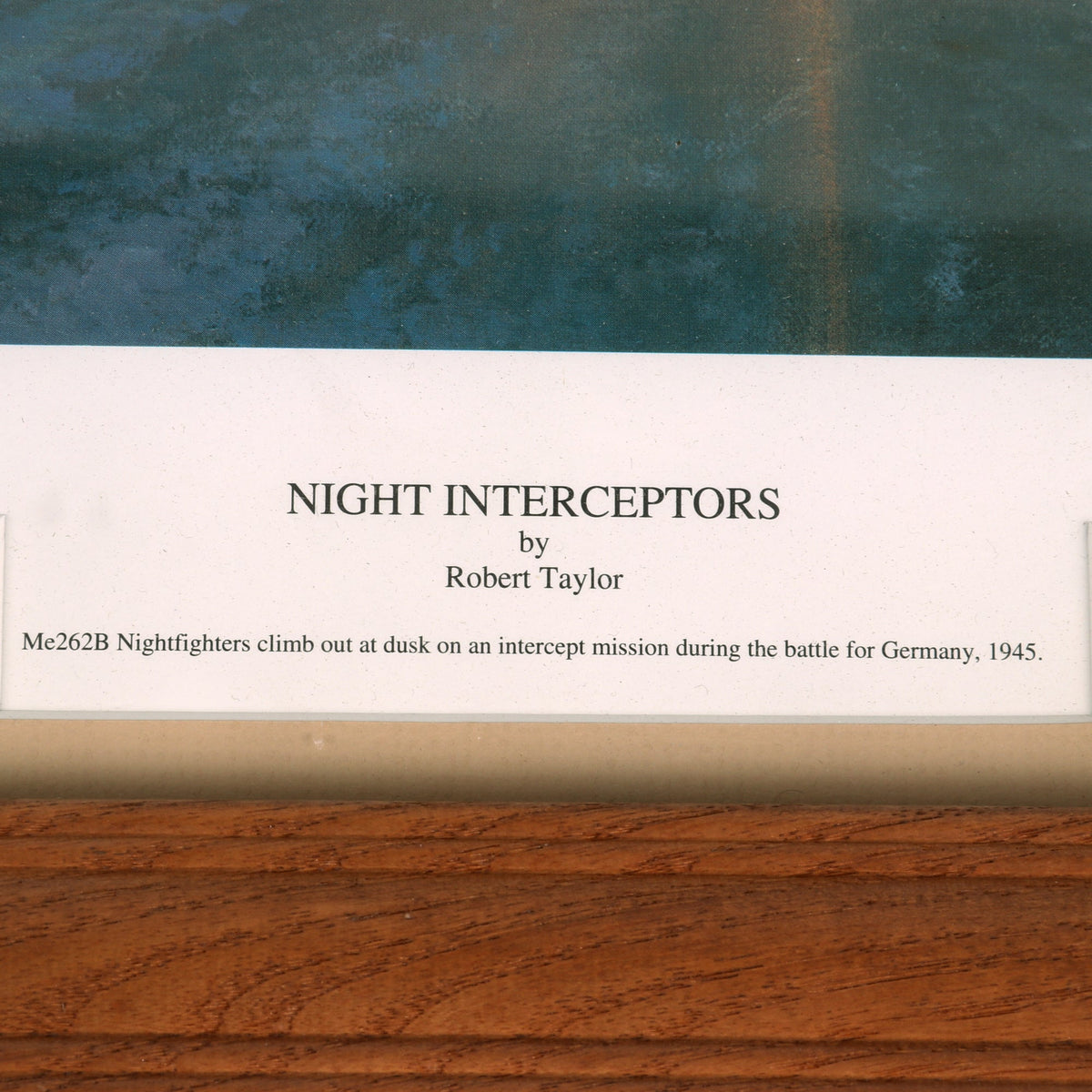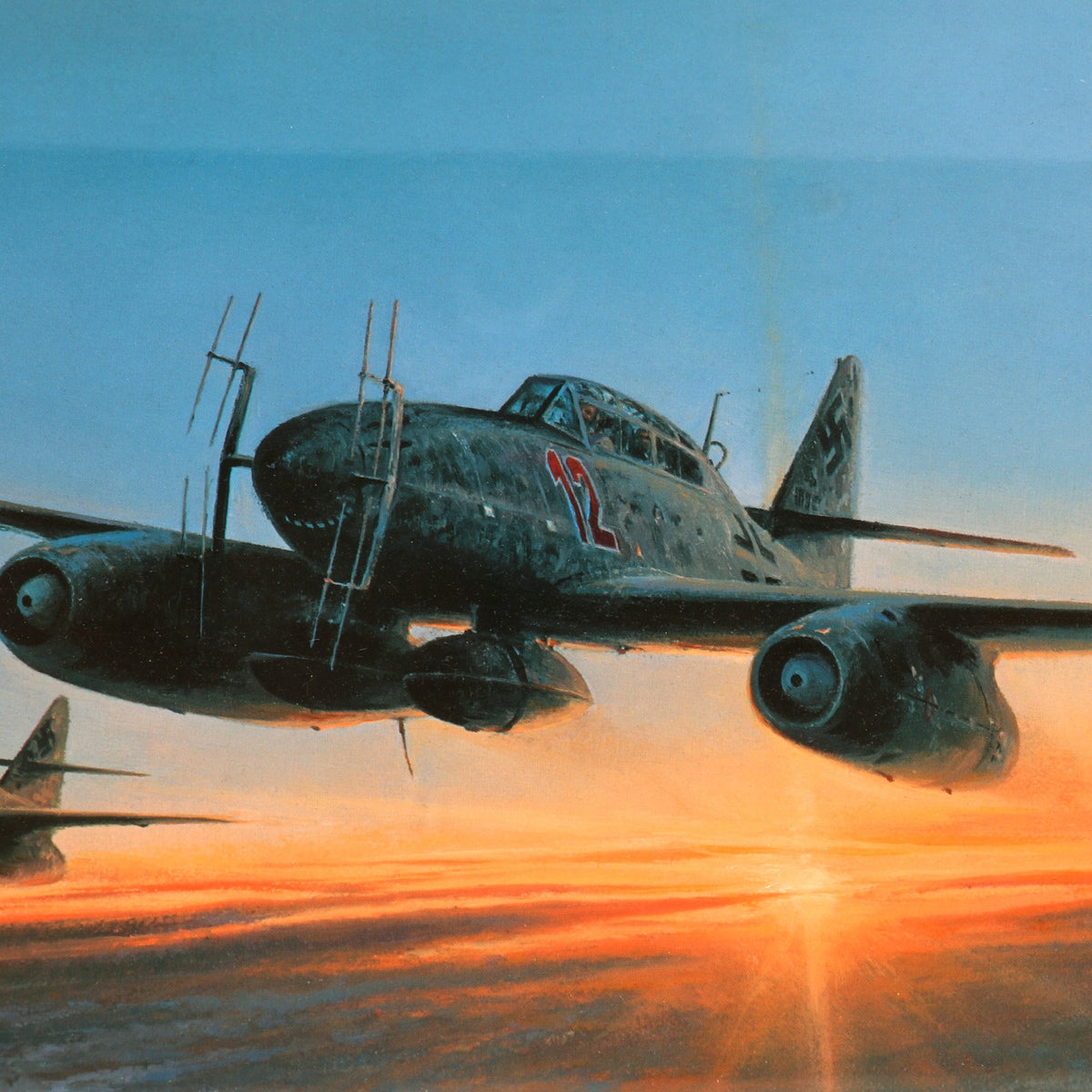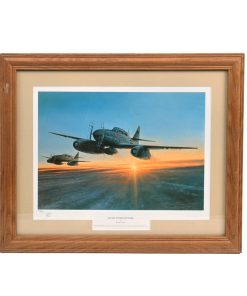Original Artwork Print: “Night Interceptors” Painting of Messerschmitt Me 262B Night Fighter Aircraft; Signed by Artist – 19″ x 15 ½”, in Museum Grade Frame Original Items
$ 550,00 $ 165,00
Original Item: Only One Available. This is a lovely framed print of Robert Taylor’s painting NIGHT INTERCEPTORS, matted and put into a museum grade frame measuring 19″ x 15 ½”. This is number 450/1250 of a run of these prints made for collectors, and will make a fantastic display piece on any wall.
The painting shows two German Messerschmitt Me 262 Jet Fighters, which are both configured in the rare Me 262 B-1a/U1 version. These were Me 262 B-1a trainers converted into night fighters, which were fitted with the FuG 218 Neptun radar and Hirschgeweih (antler) eight-dipole antenna arrays.
The painting is also described by the text beneath it, which reads:
NIGHT INTERCEPTORS
by
Robert Taylor
Me262B Nightfighters climb out at dusk on an intercept mission during the battle for Germany, 1945.
Additionally, the print is signed by artist Robert Taylor with his initials RT on the left.
A great display item ready for further research and display!
The Messerschmitt Me 262, nicknamed Schwalbe (German: “Swallow”) in fighter versions, or Sturmvogel (German: “Storm Bird”) in fighter-bomber versions, is a fighter aircraft and fighter-bomber that was designed and produced by the German aircraft manufacturer Messerschmitt. It was the world’s first operational jet-powered fighter aircraft.
The design of what would become the Me 262 started in April 1939, before World War II. It made its maiden flight on 18 April 1941 with a piston engine, and its first jet-powered flight on 18 July 1942. Progress was delayed by problems with engines, metallurgy, and interference from Luftwaffe chief Hermann Göring and Adolf H. The German leader demanded that the Me 262, conceived as a defensive interceptor, be redesigned as ground-attack/bomber aircraft. The aircraft became operational with the Luftwaffe in mid-1944. The Me 262 was faster and more heavily armed than any Allied fighter, including the British jet-powered Gloster Meteor. The Allies countered by attacking the aircraft on the ground and during takeoff and landing.
One of the most advanced WWII combat aircraft, the Me 262 operated as a light bomber, reconnaissance, and experimental night fighter. The Me 262 proved an effective dogfighter against Allied fighters; German pilots claimed 542 Allied aircraft shot down, although higher claims have sometimes been made. The aircraft had reliability problems because of strategic materials shortages and design compromises with its Junkers Jumo 004 axial-flow turbojet engines. Late-war Allied attacks on fuel supplies also reduced the aircraft’s readiness for combat and training sorties. Armament production within Germany was focused on more easily manufactured aircraft. Ultimately, the Me 262 had little effect on the war because of its late introduction and the small numbers that entered service.
Although German use of the Me 262 ended with World War II, the Czechoslovak Air Force operated a small number until 1951. Also, Israel may have used between two and eight Me 262s. These were supposedly built by Avia and supplied covertly, and there has been no official confirmations of their use. The aircraft heavily influenced several prototype designs, such as the Sukhoi Su-9 (1946) and Nakajima Kikka. Many captured Me 262s were studied and flight-tested by the major powers, and influenced the designs of production aircraft such as the North American F-86 Sabre, MiG-15, and Boeing B-47 Stratojet. Several aircraft have survived on static display in museums. Some privately built flying reproductions have also been produced; these are usually powered by modern General Electric CJ610 engines.
Fast Shipping with Professional Packaging
Thanks to our longstanding association with UPS FedEx DHL, and other major international carriers, we are able to provide a range of shipping options. Our warehouse staff is expertly trained and will wrap your products according to our exact and precise specifications. Prior to shipping, your goods will be thoroughly examined and securely secured. We ship to thousands clients each day across multiple countries. This shows how we're dedicated to be the largest retailer on the internet. Warehouses and distribution centres can be located throughout Europe as well as the USA.
Note: Orders with more than one item will be assigned a processing date depending on the item.
Before shipping before shipping, we'll conduct a thorough inspection of the items you have ordered. Today, the majority of orders will be delivered within 48 hours. The delivery time will be between 3-7 days.
Returns
The stock is dynamic and we cannot completely manage it because multiple stakeholders are involved, including our factory and warehouse. So the actual stock may alter at any time. It's possible that you may not receive your order once the order has been made.
Our policy is valid for a period of 30 days. If you don't receive the product within 30 days, we are not able to issue a refund or an exchange.
You can only return an item if it is unused and in the same state as the day you received it. You must have the item in its original packaging.
Related products
Uncategorized
Uncategorized
Uncategorized
Uncategorized
Uncategorized
Angolan Rebel 1970s era 60mm Inert Display Mortar from Angolan Civil War Original Items
Uncategorized
Uncategorized
Uncategorized
Uncategorized
Uncategorized
Uncategorized
Uncategorized
Uncategorized
Uncategorized
Uncategorized
Uncategorized
Band of Brothers ORIGINAL GERMAN WWII Le. F.H. 18 10.5cm ARTILLERY PIECE Original Items
Uncategorized
